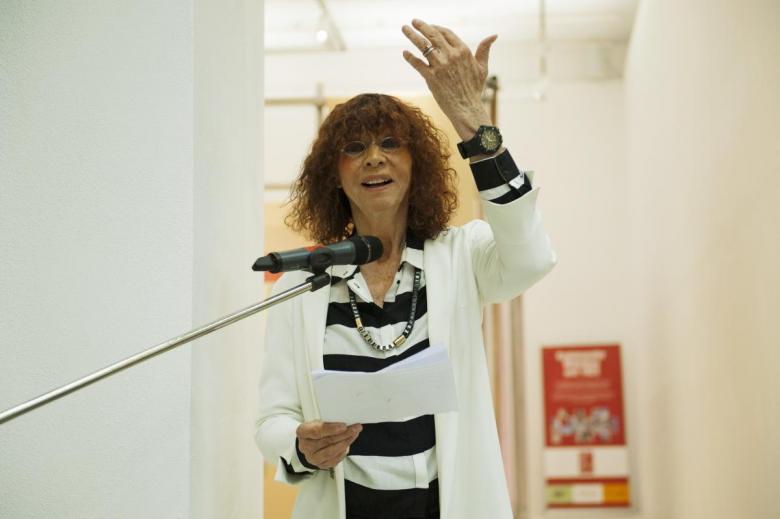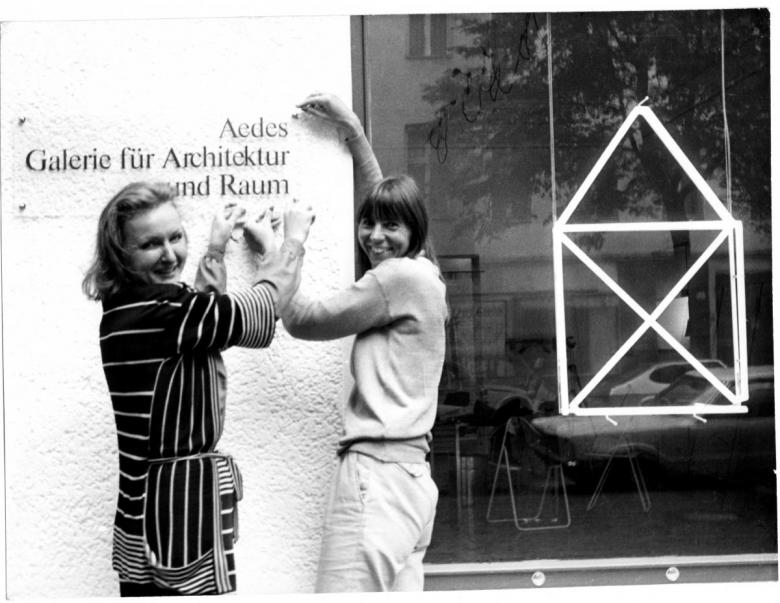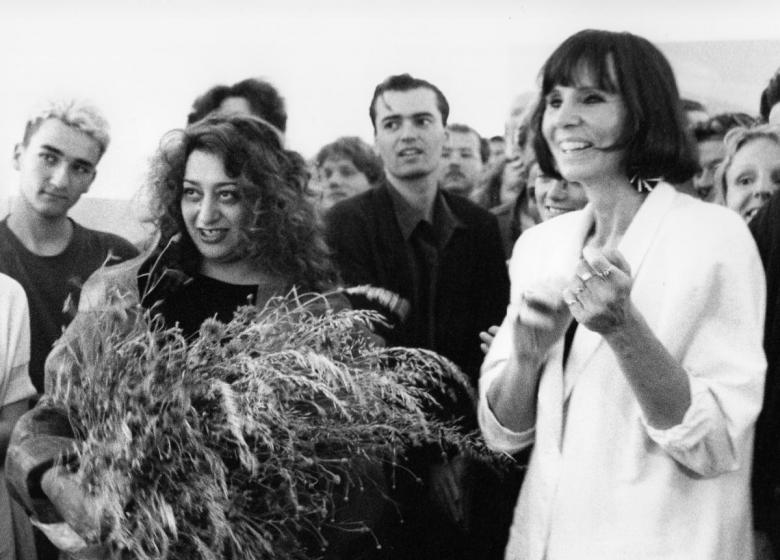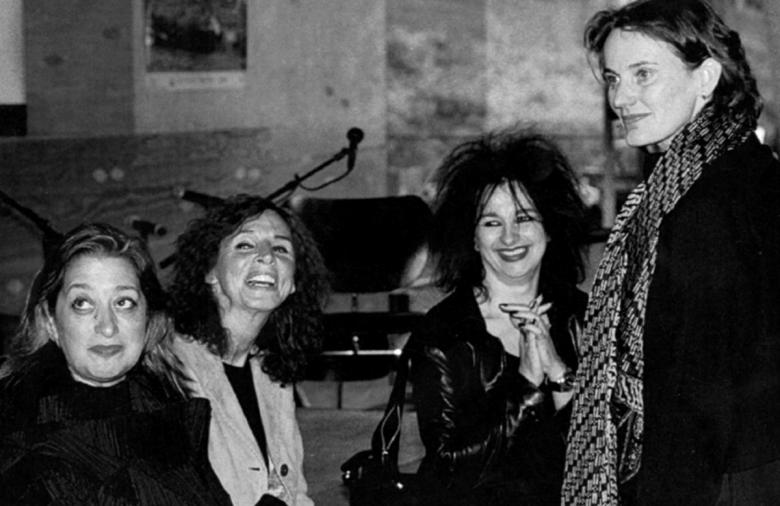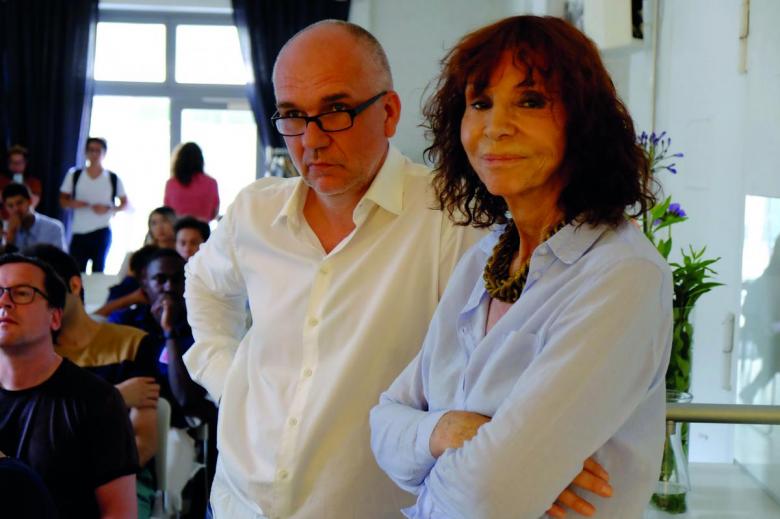Architecture curator Kristin Feireiss turns 80
An Ambassador for Architecture
John Hill, Falk Jaeger
1. July 2022
Kristin Feireiss at the opening of "In-Between. Spatial Discourse in Visual Culture" in 2014. (Photo: Erik-Jan Ouwerkerk)
When we visited Mother's House, Robert Venturi's icon of postmodernism in Philadelphia, and told the resident, Agatha Hughes, that we were from Berlin, she replied, "How is Kristin?" That was in 1992. Since then, her fame in architectural circles has only grown. On July 1, Kristin Feireiss celebrates her 80th birthday — congratulations!
Kristin Feireiss is invited internationally to give lectures and symposia and to sit on prize juries, including those of the renowned Pritzker Architecture Prize and the Venice Architecture Biennale. The TU Braunschweig awarded her an honorary doctorate and the President of Germany pinned the Federal Cross of Merit on her lapel. But it all began with a failed idea. In 1980, the Berlin-born Feireiss founded the architecture gallery Aedes together with the architect Helga Retzer in Charlottenburg, West Berlin's cultural hotspot at that time. Postmodernism was in its heyday then, and with it architectural drawing. Sheets by O.M. Ungers, Zaha Hadid, Hans Hollein, and others became a promising commodity. Architecture museums around the world fought over the estates and bequests of famous architects. Feireiss and Retzer wanted to get in on the action. Apart from the Max Protetch Gallery in New York, there was hardly any private competition.
Helga Retzer and Kristin Feireiss in 1980. (Photo: Nina von Jaanson)
They started with exhibitions dedicated to Peter and Alison Smithson, Peter Cook, Giorgio Grassi, and Rem Koolhaas — all prominent names for a promising new beginning. Feireiss wanted to deal in original drawings, and her heart bled when, in 1987, the young German architect Christoph Mäckler unpacked bundles of hand sketches and wallpapered the walls with the beautiful originals! But the market did not develop as hoped, and the idea of earning money with architectural drawings proved to be a miscalculation.
But the joy of high-caliber architecture exhibitions remained. Even when Retzer died unexpectedly in 1984, Feireiss continued undaunted. At first she organized half a dozen exhibitions annually; in the nineties up to 28 exhibitions per year; as of today there have been well over 500 exhibitions. Four hundred editions of the small, significantly square catalogues have been published: a bibliophilic series of astonishing continuity and international reputation.
Zaha Hadid, Patrik Schumacher, and Kristin Feireiss in 1992. (Photo: Regina Schubert)
The Aedes Gallery moved to Savignyplatz in 1988, to Hackescher Markt after reunification in 1995, and finally to Friedrichshain in 2006, forming the Aedes Network Campus Berlin – ANCB. There, the Aedes Architecture Forum established itself with the Aedes Metropolitan Laboratory, which organizes international workshops and symposia on urban planning and other subjects in cooperation with universities from all over the world. Kristin's partner, Hans-Jürgen Commerell, has been Aedes co-director since 1994.
Feireiss, a former journalist, has written down her life story in a biography that is absolutely worth reading (Wie ein Haus aus Karten. Die Neckermanns - meine Familiengeschichte, 2012; only in German). Feireiss grew up with her uncle, Josef Neckermann, after her parents and brother died in a traffic accident in 1948. She did not have a happy childhood in the family of an obsessive mail-order magnate, with whom she now has no connection. Nevertheless, the book is not a reckoning, but an empathetic family epic in which one reads the delicate details only between the lines. But it explains her character, her determination, her firm stance, and it reveals her warm-hearted nature.
Zaha Hadid, Kristin Feireiss, Odile Decq, and Francine Houben in 2002. (Photo: Aedes)
The secret of her success has been that she can easily deal with all people — especially architects. Architects are almost artists, after all, one reason they're so difficult to deal with. When an architect is done with the nasty world, Kristin straightens him out. When a "building artist" (Baukünstler) is at loggerheads with all the critics and entire editorial boards, Kristin can still deal with him. When someone thinks he's the greatest, Kristin agrees with him and gently clips his wings.
Who hasn't exhibited at the Aedes Gallery? Architects of the most diverse positions — from Gehry to SANAA, from Perrault to Ando, from GRAFT to Böhm — have appeared at Aedes. Hardly a famous name is missing. Helmut Jahn is but one, though ultimately it is up to Kristin Feireiss as to whom is invited, and she is always concerned with architectural culture. For this reason, the work of institutions and universities is also exhibited, and above all that of unknown young architects, for whom Aedes was not infrequently a springboard.
Hans-Jürgen Commerell and Kristin Feireiss at the "MOBILISING THE PERIPHERY - #3 Focus Africa" symposium in 2016. (Photo: Jirka Jansch)
All the activities of Aedes and ANCB are financed on a project-by-project basis by sponsors, embassies, foundations, the architects' own contributions, and other means — still a laborious business. There has never been any funding from the Berlin Senate, though the Senate likes to adorn itself with the world's most important and longest-running private architecture gallery.
In 1996, Feireiss was unexpectedly appointed director of the Netherlands Architecture Institute (NAI) in Rotterdam, which had been languishing for a long time. She learned Dutch and set off on a blaze of activity and legendary exhibitions, exploding the scope of usual architecture exhibitions with the funds and staff she had negotiated. In 2001, with the arduous mission accomplished, she left the NAI — the institution continued to feed off the upswing and visitor records for a long time — and returned to Berlin.
Kristin Feireiss is an institution and an ambassador for architecture. If building culture in Berlin and in Germany is once again something that counts, and if the French, Americans, Japanese, Italians, and others recognize this, it is also thanks to her. Today Kristin Feireiss celebrates her 80th birthday and we are happy to join in the congratulations from all over the world.
